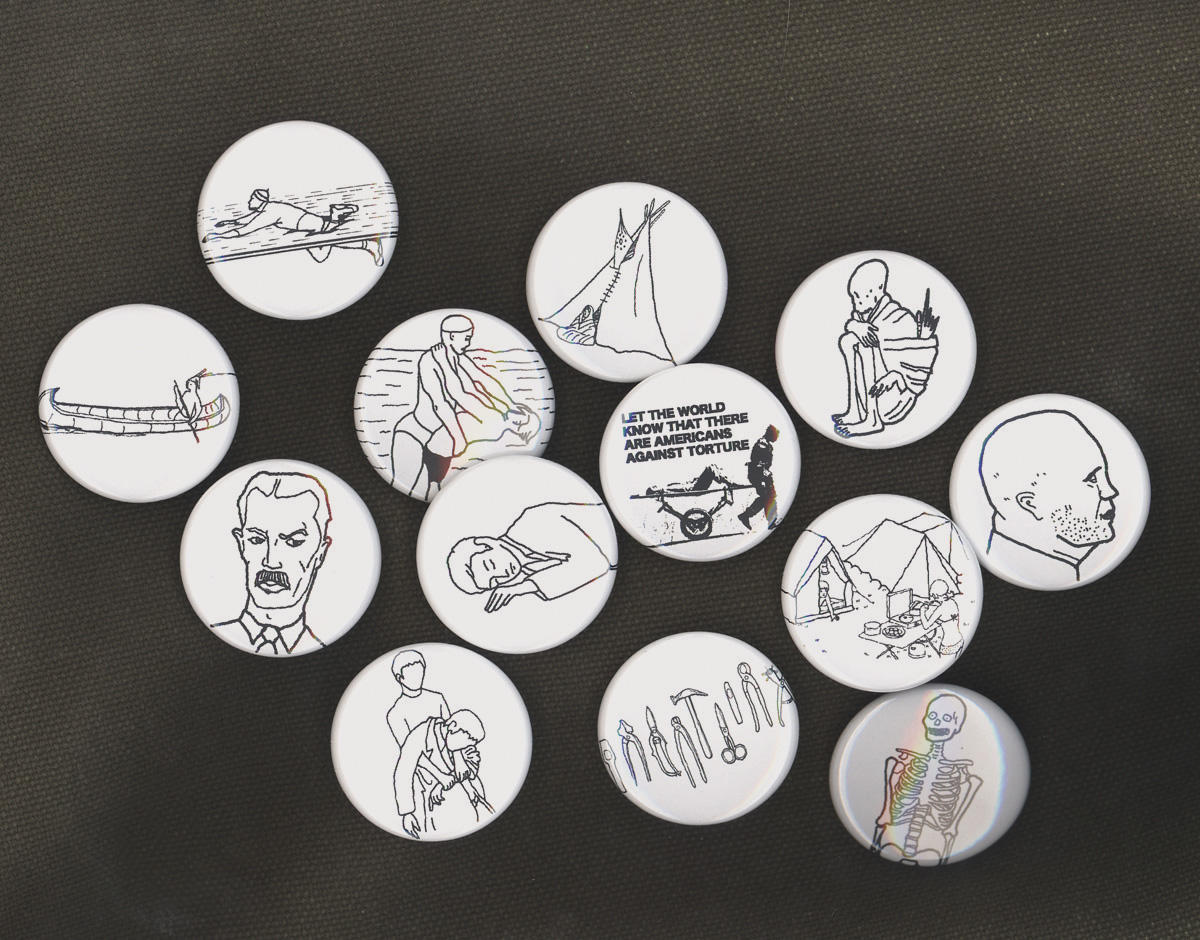
New York
Camp Campaign
Art In General
December 13, 2006–March 31, 2007
“Because it was working so silently, the machine simply escaped one’s attention.” So quotes the script by RL and VL, fictional artist protagonists of Project for an Inhibition in New York or How Do You Arrest a Hurricane?. RL and VL are quiet types. They read Kafka and Deleuze. They worry about aesthetic effectiveness; they hope against hope for an art of critical resistance. The art world’s political endgame is a familiar spectacle to them. Nevertheless, they are committed to keeping the lines of communication open. Their studio and works in progress were recently staged as an exhibition platform for Camp Campaign, a project commissioned by New York’s Art in General.
New York-based artists Ayreen Anastas and Rene Gabri constructed the “campaign” and its fictional studio/exhibition space as part of a larger inquiry into the concept of the camp, which they perceive (along with, among others, Giorgio Agamben) as a governing paradigm in the world today. How is it, they ask, that a place like Guantanamo Bay can exist in our time? What has become of human rights? What does it mean to live in a “state of exception,” where legal rights may be suspended indefinitely?
Camp Campaign shifts the contexts of these questions in order to understand their connections to everyday lives and concerns. Traveling across the US in the summer of 2006, Anastas and Gabri took their campaign to the likes of children’s camps in Maryland, former military barracks in Ohio, and Native American reservations in New Mexico, as well as artist collectives, coffeehouses, and radio stations. “Ours is a campaign of both refusal and generating questions,” they explain in their project description. As such, its exhibited form refuses to present their findings as neat answers.
Their trip is charted on a map titled Fear Is Somehow Ours for Whom? For What? + Proximity to Everything Far Away. The US map is framed by text and marked with people and places that figured literally or metaphorically along their trajectory (Walter Benjamin shows up at Camp Perry, Ohio; Judith Butler near San Francisco).
The map’s legend reads as a travelogue of events, quotes, and commentary: in New Orleans, where they met with local relief organization Common Ground, the map notes, “If there ever was a recent event in which our critical terminology was put into play (ie, state of exception, the camp, biopolitics) one would have to confront New Orleans. Moreover, if there ever was a project for a revolution or the potential for a dignified and relentless revolt… how was this potential quelled, snuffed, muffled?”
By its very nature and form, an exhibition can only represent such questions, but Anastas and Gabri know better than to neglect its more useful mechanisms. Through displacement, time delay, and the crafting of a fictional work in progress, they turn the exhibition format inside out. The public is invited into a minimal workspace: there is a slideshow of photographs, a film projection, what could be an editing station with two monitors, and a stack of maps for visitors to take. Pins and stickers with instructional line drawings (camp-related words taken from a visual dictionary) are in one corner, stacks of classical records (Xenakis, Schoenberg, Debussy) and a gramophone in another.
The visitor is guided, in place of labels or brochures, by a “script” — what appear to be working production notes for the silent film projection on the wall, complete with a proposed narrator’s monologue. Doubling the experience, the script also sets out the unfolding of the exhibition itself (the opening lines read: INT. Exhibition opening — Dec. 13, 6pm…We are in a storefront on Walker Street, in Chinatown, New York City. RL and VL have an exhibition opening. There is a small crowd…). Only the first few scenes are provided; the next moves will be scripted over the course of the show’s run, while the space changes accordingly. The exhibition is moving backwards in time, from its opening to its conception.
If Agamben guides the artists’ questions, Robbe-Grillet and Kafka haunt their forms. The impersonal descriptions and cinematic structures of Robbe-Grillet’s novels are echoed in the work’s visual and textual material, in its restrained tone and perceptual shifts and breaks. References to Paul Celan and Iannis Xenakis heighten a sense of troubled modernist poetics.
These are familiar aesthetic tropes: appropriation, self-referentiality, mise en abîme. But intertextuality isn’t just a postmodern ploy. It differs in the way in which meaning is fragmented — with a filmmaker’s sense of dramatic juxtaposition and estrangement, anticipating the distracted realities of the ultra-politicized moment.
As artists, Anastas and Gabri take things apart and put them together again, to try and expose the historic, aesthetic, and political lines that lead to Camp Campaign. Of course, a spectator will only accompany them so far; research as style is probably not for everyone. But anticipating the audience’s commitments just might be part of their strategy. And spectacle or no spectacle, RL and VL aren’t backing down. A few weeks into the exhibition, the windows of the Chinatown project space were sealed off with two large hand-painted posters, which read in English and Cantonese: “Let Americans know that the world is against torture.”